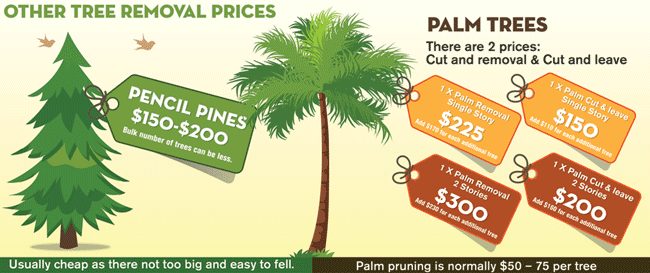Discover Exactly How To Keep A Successful Atmosphere After Tree Elimination
Discover Exactly How To Keep A Successful Atmosphere After Tree Elimination
Blog Article
Content Written By-
When it involves seasonal tree treatment, making certain proper management before and after removal can considerably impact the health and visual appeals of your landscape. By understanding the required actions associated with examining tree health and wellness and preparing for elimination, you can proactively secure your residential property. However what regarding the essential practices to adhere to once the tree is gone? Stay tuned to uncover the important post-removal treatment steps that will certainly aid you grow a successful and sustainable environment for your trees.
Pre-Removal Tree Treatment
Prior to dealing with the elimination of a tree, it's important to focus on pre-removal tree treatment. Start by evaluating the tree's health and structural integrity. Look for indications of illness, pest invasions, or any type of structural concerns that may posture a safety and security risk throughout elimination. It's essential to consult with a certified arborist to identify the best strategy.
Trimming dead or diseased branches can prevent additional damages to the tree and ensure a smoother elimination process.
Furthermore, think about the environmental impact of getting rid of the tree. Trees play an important duty in our ecological community, so growing a new tree in a suitable location can aid counter any type of loss. Ensure that you have the needed permits and permissions for tree removal, specifically if the tree is safeguarded by local regulations.
Seasonal Upkeep Tips
Examining your tree's requirements throughout the year is essential for its health and long life. To keep property manager maintenance in leading condition, comply with these seasonal upkeep pointers.
In springtime, focus on trimming to get rid of dead or broken branches and motivate new development.
Summertime requires regular watering, specifically during droughts, to ensure your tree stays hydrated.
As autumn approaches, watch out for early signs of condition or stress and anxiety, and consider applying compost to protect the origins during winter season.
In winter, be cautious when eliminating snow from branches to avoid breakage, and continue to check your tree's total wellness.
Keep in mind to change your care routine based on the details requirements of your tree varieties and local environment. By remaining attentive and aggressive throughout the seasons, you can help your trees flourish and thrive for many years ahead.
Post-Removal Tree Care
To ensure the wellness of your landscape even after tree elimination, appropriate post-removal treatment is essential. After a tree is removed, it's essential to fill up the continuing to be hole with topsoil and small it to prevent settling. This will assist preserve the integrity of the ground and prevent prospective risks in the future.
Consider growing new vegetation in place of the eliminated tree to restore the equilibrium and aesthetic appeals of your landscape. Routinely water the area to advertise the development of new plants and protect against soil disintegration.
Check the bordering trees for any type of indications of disease or anxiety that might have been triggered by the eliminated tree. Keep private homeowners out for parasites that could've been brought in to the previous tree and take preventive measures to protect the staying plants.
If required, consult with a specialist arborist to analyze the effect of the elimination on the bordering trees and figure out any type of added care needed. By following https://www.architecturaldigest.com/story/landscape-designers-coronavirus-challenges -removal care actions, you can make sure the continued wellness and elegance of your landscape.
Final thought
In conclusion, aggressive seasonal tree treatment is essential for preserving the health and wellness and balance of your landscape. By assessing tree health and wellness, trimming, and speaking with an arborist before removal, you can make sure a secure process. After removal, filling up the hole, planting new greenery, and normal watering will certainly promote new development and stop disintegration. Bear in mind to evaluate surrounding trees for disease and seek further care measures from an arborist to maintain your landscape prospering.
